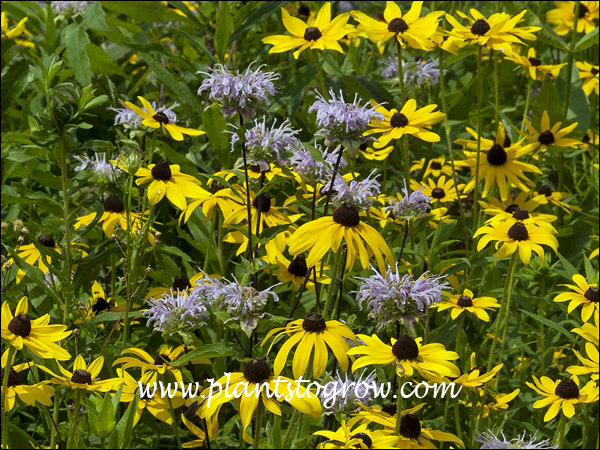| Description | Wild Bergamot (Monarda fistulosa) is a prairie wildflower tolerant of black walnut and dry soil conditions. |
|---|---|
| Plant Type | Perennials Hardy, Wild Flowers |
| Hardiness Zone | 3-9 |
| Sunlight | Prefers full, but tolerates some shade, |
| Moisture | dry, medium to moist |
| Soil & Site | dry to moist |
| Flowers | The pale lavender flowers form a dense rounded head on the top of the stem. The tubular corollas are inside of a whorl of leafy bracts. Flying insects that can reach the nectar deep in the floral tubes pollinates it. Blooms July and August |
| Leaves | Opposite leaves that are sharply toothed, scented foliage from the oil of Beaumont. Leaves can be used to make tea. |
| Stems | Like members of the Lamiaceae family, the stem is square, erect, and hairy. It will spread by rhizomes. |
| Roots | fibrous |
| Dimensions | Grows up to 5 feet, spreads by rhizomes and can form dense clumps. Needs competition or drier soils to control the spread. The center tends to die out. |
| Maintenance | Will develop powdery mildew late in the summer. At this time cut the plant back. It will quickly regrow. |
| Propagation | seeds, division |
| Misc Facts | Named after Nicolas Monardes, a 16th century Spanish physician and horticulturist. Bergamont tea is made from this plant. This drink has many medicinal uses. Fistulosa means "full of pipes". referring to the tubular flower parts. |
| Author's Notes | In the prairies that I visit, this is a common plant around southeastern Wisconsin, USA. Like most Monards, if used in a garden, avoid very moist sites, as this plant will spread aggressively. |
| Notes & Reference | #09-The Prairie Garden (J. Robert Smith with Beatrice Smith), #14-Hedge maids and Fairy Candles (Jack Sanders), #55-The Garden Book for Wisconsin (Melinda Myers), #274-Site Authors' observations and growing experiences of Monarda fistulosa |

Cart













